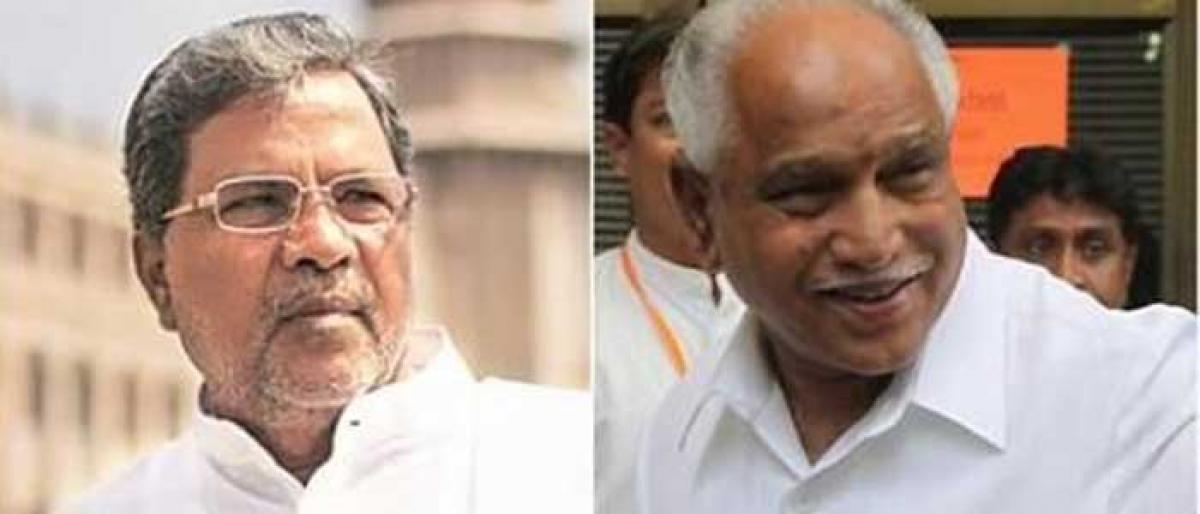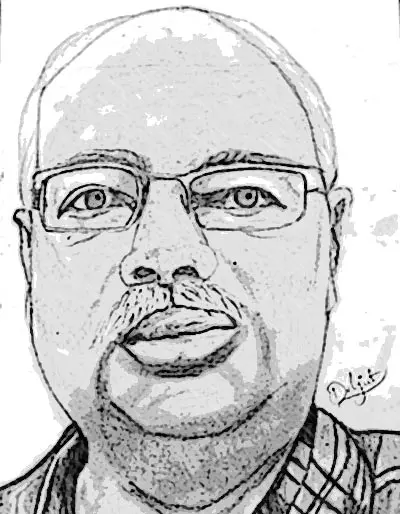Live
- ‘AAP govt settling Rohingyas in Delhi, giving voter cards’
- Students advised to pursue excellence through learning
- Cold wave hits AP, Telangana: temperatures plunge to single digits
- AAP replaces Gahlot with another Jat face in Cabinet
- A Rising Star in Indian Cinema
- Telangana Introduces EV Policy to Prevent Severe Air Pollution
- Group- III exams conclude
- Ghose probe panel to summon KCR, Harish
- AP assembly meeting begins with question hour, several bills to be introduced
- Water Board ED inspects STP works
Just In

The BJP which is buoyed by its performance in Gujarat and Himachal Pradesh has now shifted its spotlight to Karnataka, which is considered to be the party’s gateway to South. The saffron party wants to go to people with an appeal to make the State Congress-mukt. Already the noise levels have shrilled down, accusations, counter-accusations, poll surveys and strategies for micro-management of elect
The BJP which is buoyed by its performance in Gujarat and Himachal Pradesh has now shifted its spotlight to Karnataka, which is considered to be the party’s gateway to South. The saffron party wants to go to people with an appeal to make the State Congress-mukt. Already the noise levels have shrilled down, accusations, counter-accusations, poll surveys and strategies for micro-management of elections are all actively underway.
The party’s national leaders have hit the road while Congress leaders, Rahul Gandhi and others, are set to jump into the campaign fray soon. Everything implies that the land of Tipu Sultan is likely to witness an interesting electoral battle. Unlike in other parts of India, down south, politics are always fascinating, interesting and way different too.
In 2013 general elections, Karnataka opted for Congress party. With the fast-changing political equations in the South, the situation also appears to be changing. But it remains to be seen whether both the BJP and Congress can replicate their Gujarat showings or if one outscores the other.
Though both the national parties are confident that they would come to power, pre-poll surveys indicate that there is a greater possibility of a hung Assembly. Of the 224 seats up for grabs, the projections are that the Congress and the BJP will get over 80 seats each. If that happens, a coalition government becomes inevitable with the JDS led by former Chief Minister HD Kumaraswamy as the potential king-maker. Political analysts feel that on their own the Congress and BJP will fall short by about 35 to 40 seats to reach the magic figure of 112 to form the government.
But then if history is any indication coalition governments have never been successful in Karnataka. In 2004 Assembly elections, BJP had emerged as the single largest party with 79 seats followed by Congress with 65 seats and JDS with 58 seats. The Congress struck a deal with the JDS and formed a coalition. However, the Congress refused to make Kumaraswamy the Chief Minister and instead he was given the post of Deputy CM. Dharam Singh of Congress party became the Chief Minister. The JDS, which was unable to digest this, withdrew support after 19 months and sent all its MLAs into hiding. They were sent to Goa where JDS entered into an agreement with the BJP to form a new government.
Both the JDS and the BJP agreed to share the office of CM for equal period. The first chance was given to Kumaraswamy. Yeddyurappa became the Deputy Chief Minister. Interestingly, when the time to vacate the office in favour of BJP nominee Yeddyurappa came, Kumaraswamy in October 2007 refused to honour the agreement, resulting in the BJP withdrawing support to the government and Karnataka was put under President’s Rule. However, in November, the JDS reconciled and Yeddyurappa was sworn in as the Chief Minister. But after seven days, the JDS again decided to withdraw support.
Against the backdrop of this situation, and worried over such a possibility, both the Congress and the BJP this time are burning midnight oil to work out strategies to get a clear majority to form the government. The Congress party appears to be taking the steps as it did in Punjab, which is, primarily, backing the local leadership.
The Karnataka Pradesh Congress Committee (KPCC) does not want to take any chance and wants to reach out to every voter and stall the BJP from coming to power. It has already formed 54,261 booth-level committees to publicise the various developmental initiatives taken up by the Siddaramaiah government.
The KPCC has delegated different sets of responsibilities to different wings of its frontal organisations like Youth Congress, National Students Union of India (NSUI) and the Mahila Congress among other departments. The Karnataka government recently launched a logo for Bengaluru amid much fanfare and celebration. The logo is aimed at giving it a brand identity that’s similar to that of New York, London and Amsterdam, among other global destinations.
The crowd-sourced logo, with a mix of Kannada and English, tries to emphasize ‘Be U’ from the word Bengaluru — uncannily similar to ‘I am’ from the I Amsterdam logo — to capture the ethos of a city known for its gardens, innovation, technological prowess and start-up culture. “The logo will help to leverage Bengaluru’s identity better and create a brand value that could, in turn, stimulate the economy and create jobs by attracting more footfalls,” say the party leaders.
But then the problems are galore. Money and caste play a very strong role in Karnataka. One of the most backward States as far as voting is concerned, the anti-incumbency factor is also high. Scams at regular intervals could dent the party’s image. Though Yedyurappa was accused of corruption against him and his sons during his tenure, the clean chit issued might help him to take on the Congress.
Another problem facing the Congress is poor governance which will play a key role in this election. There has not been much focus on infrastructural development. The law and order situation had taken a beating leading to growing intolerance among people. The memories of the Bellary mining scam are fresh in the minds of the people. There are nine Assembly seats in Bellary and the main fight here would be between the BJP and Congress. All this is likely to help the BJP in moving closer to the seat of power.
The BJP and the Janata Dal (secular) are both carrying out rallies across the State to highlight the shortcomings of the Congress rule — or misrule — under Siddaramaiah, which forces the party to project its achievements to counter opposition political party claims. The Congress will have to approach 2018 differently when compared to 2013, when the party was in opposition. In 2013, they could easily oppose what the BJP did, but this time they have to defend their government’s record.
However, the BJP also has its cup of woes full. There is a lack of coordination within the State unit. There are factions which are opposed to Yeddyurappa and they are not happy with the party central leadership declaring him as the CM candidate. But the BJP feels that only Yeddyurappa can consolidate the Lingayat votes. An overall look at the caste break-up of candidates indicates that Lingayats and Vokkaligas make up for over half the number of winners. While Lingayats have been backing BJP, Vokkaligas generally sail with JDS.
The BJP approach, meanwhile, has been to showcase Prime Minister Narendra Modi's track-record while attacking Siddaramaiah over corruption allegations, the state's law and order situation. Against the backdrop of this situation, the electoral battle in Karnataka appears to be in for a lot of drama and hungama.

© 2024 Hyderabad Media House Limited/The Hans India. All rights reserved. Powered by hocalwire.com







